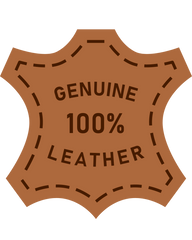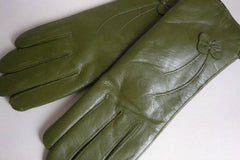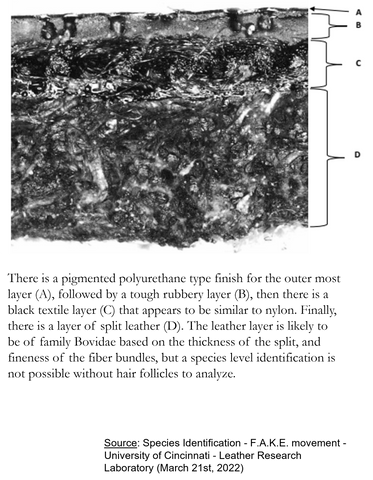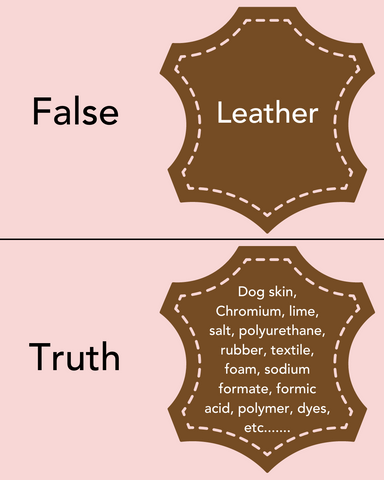Leather is, for many people, a sign of luxury and long-lasting quality in fashion. However, behind its shiny appearance, there are some worrying secrets about “Genuine Leather.” This article is going to dig into the real story behind this common term and uncover what’s actually going on.
The Misconception of “Genuine Leather”
At first glance, "Genuine Leather" suggests a seal of authenticity and superior quality. However, the truth is far less glamorous. In reality, it's the name for the lowest grade of leather out there.
Imagine taking leather scraps, blending them with glue, and pressing them into sheets – that's "Genuine Leather". Far from the mark of luxury it implies, "Genuine Leather" is a product of economic efficiency, prioritizing cost-saving over durability and integrity.

PETA shows us one of the dirty use of Genuine Leather
In 2014, PETA's investigation discovered that the U.S. was getting leather from China that was made from cats and dogs but labeled as "Genuine Leather."
After the animal's hide was turned into leather, there was no way for shoppers to tell whether it was made from a specific type of cow or, surprisingly, from cats and dogs. And once it's tagged as "Genuine Leather", you can't really know the true source of the leather without detailed lab tests and research.

We did our own laboratory research
Intrigued and concerned by these revelations, we (the F.A.K.E. Movement) partnered with VegFund to conduct our own laboratory research to identify leather items from fast fashion brands by using optical microscopy. Our findings were startling: only 40% of the samples could be confidently identified. The others were more challenging to recognize because their hair follicles had been removed, probably due to the harsh chemical treatments involved in the tanning process.
Moreover, we discovered that a significant majority of the samples were not pure leather but had been augmented with synthetic materials such as polyurethane, nylon, rubber, or foam. It shows that companies are trying to save money by adding cheaper materials, which ends up lowering the quality and making it less clear what you're really buying.

Can we make deeper research?
Thank you for asking!
In 2015, a group of scientists conducted a study to determine the species of leather by analyzing its DNA. This study was sponsored by Hermes and the French music museum “Musée de la musique”.
In order to identify the species of leather, Scientists had to reconstruct damaged DNA due to the tanning process, a complex and costly process. I had the chance to talk to the main researcher over a zoom call who explained me that these studies can cost tens of thousands of dollars and only provide a guess of the species without 100% accuracy.
What the brand risk?
Well this is one of the main issue.
The U.S. Customs and Border Protection warns that brands that import cat or dog skin may face a fine of up to $10,000, but this amount is not significant for big fast fashion brands. These brands often use subcontractors and can claim ignorance of the fact that the leather came from cats or dogs since the products are labeled as “genuine leather.”
But even if one wanted to prove that a fashion brand uses dog or cat leather, it would require a significant investment of resources with a potentially limited impact on the brand.
Trust the label?
Our investigation led us to realize that when you buy a product labeled as “genuine leather”, or even “100% leather,” brands can add whatever they want in the recipe of this leather: foam, rubber, textile, plastic… Or even dog leather.
Can you imagine buying a bread, looking at the ingredients and only seeing:
ingredients = bread.

Towards Transparency and Ethical Choices
In May 2020, China introduced the ban on selling live dogs and dog meat for food. It was a memorable moment for animal welfare; it was the first time in history that dogs were recognized as companion animals, not food for humans.Many countries still allow the consumption of dog meat. However, the absence of concrete evidence makes it challenging to determine the current status of dog leather production. One thing for sure is that all of the above proves that it is still possible, and dog leather (probably labeled as genuine leather) might still be on the market.
But, it begs the question, what is the actual difference between cow leather and leather made from dogs or other animals?

